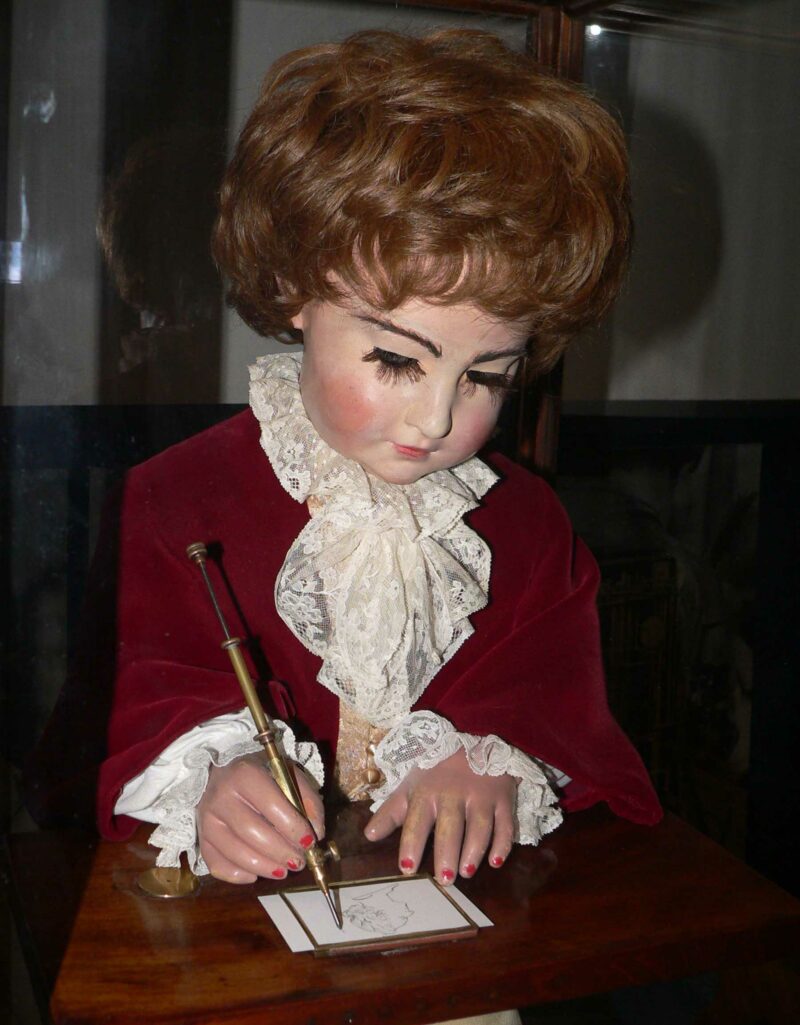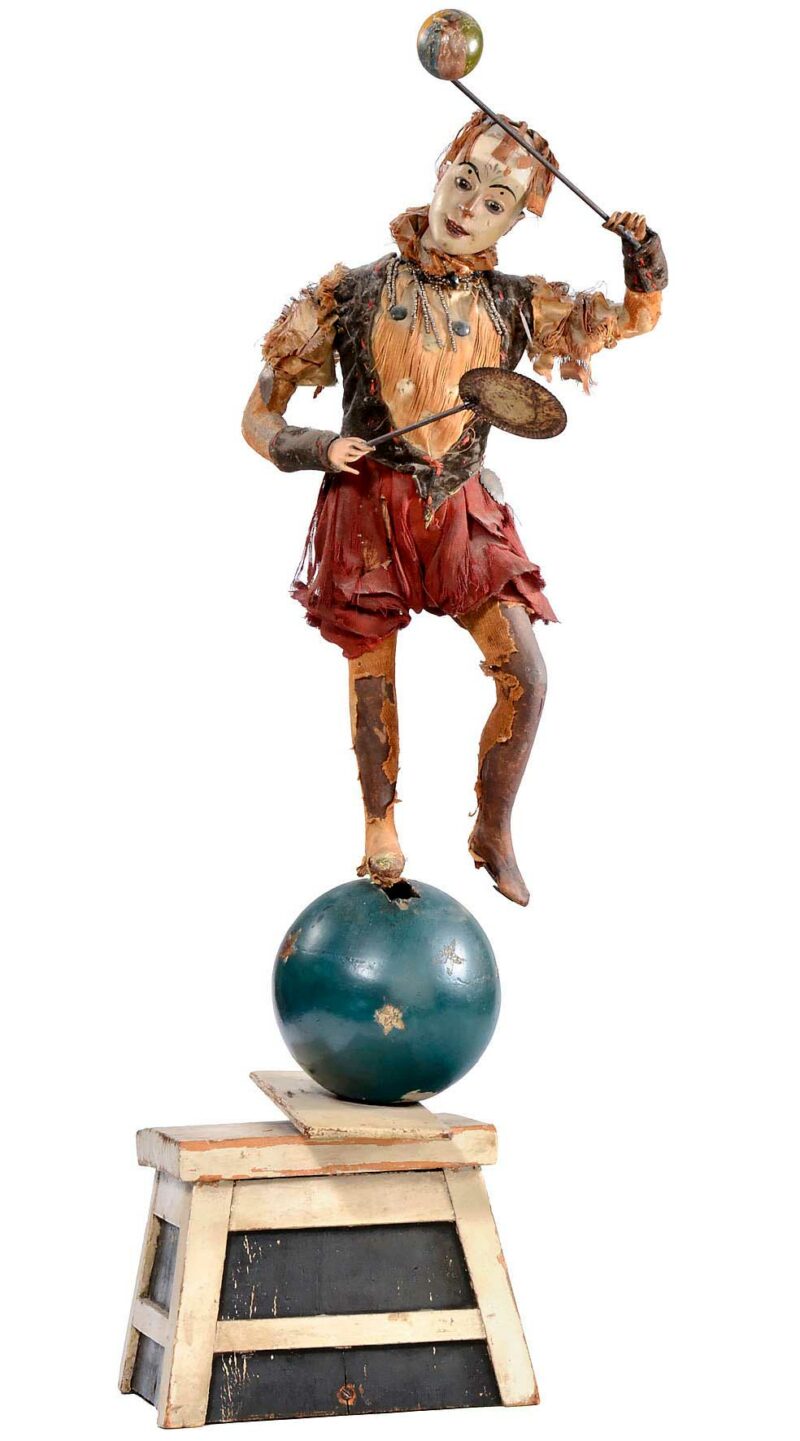Automata are self-operating machines.
From the Renaissance to the present day, the term automaton has been used for independent mechanical processes that are triggered by an external signal as for example the push of a button.
Automates refer to the playing of music, moving figures, the writing of a signature, the automatic drawing of a picture and other impressive inventions..
Today the term automatonis used in watchmaking specifically for watch movements that wind themselves with the help of an eccentric rotor.
The history of automata is long and rich. Renaissance and Baroque, the 16th and 17th century, produced Chimes in tower clocks, table centerpieces, princely gifts. They were perceived as mechanical wonders. Center of development was Augsburg, famous by the ingenuity of watchmakers like Schlottheim et al.
In the Ere of Enlightenment (18th century) androids were invented, music boxes, writing and drawing automata. The dream of mechanization defined the culture. Wood and metal discs were transformed into needle and cam rollers. Centers of invention were Neuchâtel and Geneva, known by the awesome works of Pierre Jaquet-Droz, his son, et al.
In the Bourgeois Society of the 19th century automata became industrial products produced in big quantities. Examples were doll automata. The dream was now storing music and movement, aimed at the reproduction of emotions. In the technical area’s development was geared up by calculating machines.
Progress in the first half of the 20th century was driven by entertainment machines, station automatons, pianolas, jukeboxes. In watchmaking automata lost prestige.
In the second half of the 20th century, most of us lived the introduction of punch cards for computer programming, transformation of the music box into the hard disk thus leading to the triumph of electronics, computers and robotics. Parallel to this the automaton culture in haute horlogerie turned to limited specialties. May be the 21st century will experience a renaissance of mechanical microprocessors in wrist watches. The concepts and solutions are ready.
Copying nautical or logarithmic tables is tedious work and even more prone to errors. The English mathematician Charles Babbage therefore suggested to the British Admiralty to build a machine for this purpose. Inspired by the new mechanical looms and by the development of automata in the emerging watchmaking industry. He combined rollers and cams in order to apply mathematical operations. Which always remained the same. To different initial values with constant precision. He thus created the first, still purely mechanical calculators in the 19th century. They are the precursors of today’s computers. Ada Lovelace developed the programs to run these machines.
















